Introduction
It's been about a year since AMD and its partners delivered the HD 7XXX series based on AMD's Southern Islands Graphics Core Next architecture. We saw Tahiti, Pitcairn, and Cape Verde-based GPUs filling out AMD's product stack to attack each price/performance point. Aggressive pricing cuts throughout the year added value to each of the offerings when compared to their NVIDIA-based competition. What we have here today is a card that comes with a unique twist to it from Zalman: HD 7870 Turbo with pre-installed Zalman VF3000 Heatsinker. A card that is equipped with Aftermarket Cooler and runs it cooler and quieter than reference design.
The HD 7870GHz Edition is based on the AMD’s latest Graphics Core Next (GCN) architecture, which is a revolutionary new design that eliminates the previous VLIW design of the Northern Island’s architecture for non-VLIW SIMD engine. Additionally, the HD 7870 internally houses 20 GCN cores, 32 raster units and 128 texture units, all while boasting a transistor count of 1.4 billion in a 212mm² die. In addition, the core clock of the HD 7870GHz Edition is set at 1GHz, which is due to the fabrication process and it is precisely this reason the HD 7870 performs as well as it does. Beyond just the core architecture though, the HD 7870GHz Edition also has an ace in the hole, as it were. I am referring to the memory interface of the graphics card which has 2GB of GDDR5 memory to draw from. This is going to allow the HD 7870 to buffer frames faster than most mid-range graphics cards on the market, which in turn allows it to be more capable when running games at high settings and resolutions.
Specifications
The GPU, Pitcairn, is a downscale from the HD 7900 "Tahiti" silicon, which introduced AMD's new Graphics Core Next architecture. Targeting a wide price-range, the HD 7800 series falls into the market-segment both AMD and NVIDIA have known to refer to as the "sweet spot" segment. Apart from 1280 stream processors, Pitcairn has 80 Texture Memory Units (TMUs) and a 256-bit wide GDDR5 memory interface, holding 2 GB of memory.
- 28nm Pitcairn GPU using GCN
- 1280 Stream Processors / 20 Compute Units
- 2.8Bn transistors / 212mm2
- 1.1GHz Engine Clock
- 1200MHz (4.8Gbps) 2GB GDDR5 RAM
- 256-bit Memory Bus
- 153.6GB/s memory bandwidth
- 80 Texture Units
- 32 ROPS
- DVI-DL + HDMI 1.4a (Fast HDMI supported) & 2 DisplayPort 1.2 outputs
- DirectX 11.1 / OpenCL 1.2 / OpenGL 4.2
- SLI / Crossfire:- Crossfire
- VGA Output:- By DVI to VGA converter
- DVI Output:- Dual Link DVI-I x1
- DisplayPort:- On Board (Mini DP) x2
- HDMI:- On Board x1
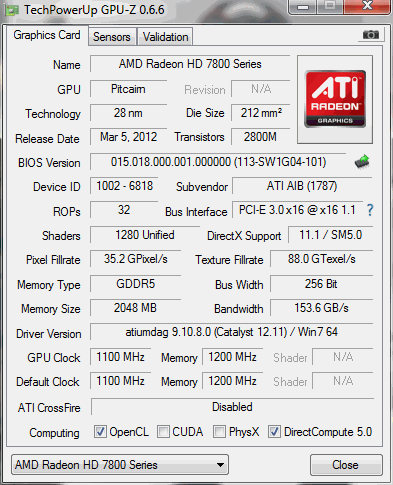
The Graphics Engine Architecture
With the initial release of the 7000 series AMD moved away from the VLIW5 and VLIW4 architecture we have seen in the last generation of products. If anything, VLIW4 has shown certain inefficiencies in the Radeon HD 6900 series and while VLIW designs are fine for graphics, they are not so grand for computing.
Both the Radeon HD 7700 and 7800 series are also based on the very same GCN architecture the 7900 series is based off.
GCN is short for Graphics Core Next architecture and the architecture building block has changed significantly to remove certain inefficiencies seen in the VLIW architecture. A GCN in essence is the basis of a GPU that performs well at both graphical and computing tasks. To the compute side of things the new GCN Compute unit model has been introduced, it is designed for better utilization, high throughput and multitasking, e.g. performance, performance, performance.
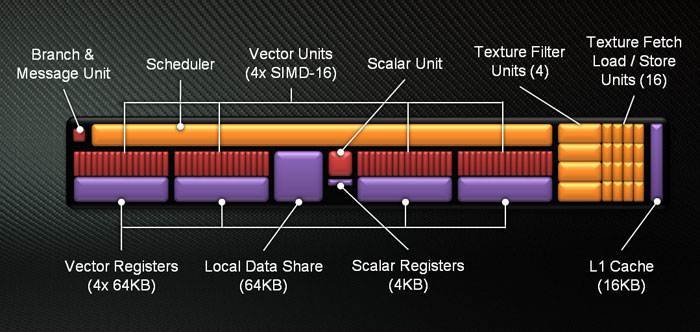
So your basic new Shader cluster is one called a (GCN) Compute Unit:-
- Non-VLIW Design
- 16 wide SIMD unit
- 64 KB registers / SIMD unit
Now if we take 4 of these SIMD units that will be the basis of one Compute Unit (CU), each SIMD unit is 16 wide, times four per compute unit means that each CU has 64 shader processors.
The Pitcairn PRO GPU has 16 Compute Units meaning 64SIMDs x 16 CUs = 1024 Shader Processors (for the R7850).
The Pitcairn XT GPU has 20 Compute Units meaning 64SIMDs x 20 CUs = 1280 Shader Processors (for the R7870).
- The engine has Dual Geometry Engines / Asynchronous Compute Engines
- 32 color ROPs per clock cycle
- Engine ties to 512KB R/W L2 cache
- Pitcairn GPU has up-to 20 Compute Units
The Graphics Core Next Compute Unit (CU) has about the same floating point power per clock as the previous one (i.e. Cayman). It also has the same amount of register space (for the vector units). Each CU also has its own registers and local data share.
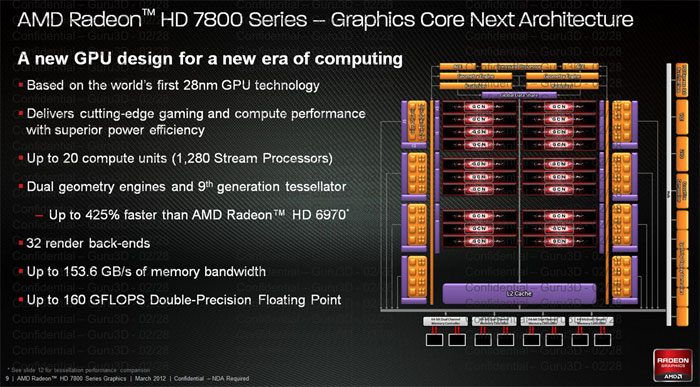
PCIe Gen 3
In Q3 and Q4 of 2011 we saw a lot of PCIe Gen 3 motherboard announcements. What's that all about you ask? In a nutshell, PCI Express Gen 3 provides a 2x faster transfer rate than the previous generation, this delivers capabilities for next generation extreme gaming solutions.
So opposed to the current PCI Express slots which are Gen 2, the PCI Express Gen 3 will have twice the available bandwidth at 32GB/s, improved efficiency and compatibility and as such it will offer better performance for current and next Gen PCI Express cards.
To make it even more understandable, going from PCIe Gen 2 to Gen 3 doubles the bandwidth available to the add-on cards installed, from 500MB/s per lane to 1GB/s per lane.
So a Gen 3 PCI Express x16 slot is capable of offering 16GB/s (or 128Gbit/s) of bandwidth in each direction. That results in 32GB/Sec bi-directional bandwidth.
The big problem is that you need a symbiosis of proper compatible hardware, like a Gen 3 supporting motherboard, Gen 3 capable processor and thus a graphics card supporting the new standard.
Eyefinity 2.0
One of the biggest success stories of the Radeon series was the introduction of Eyefinity. Eyefinity allows you to use multiple monitors in desktop and gaming mode. Typically you needed the very same monitors and resolutions, Eyefinity 2.0 changes that. You are now actually able to create a custom resolution. So if you have three different sized monitors, you can actually get that working (not that I'd recommend it).
More monitor signal bandwidth is created with the 7000 series cards as well, you may now create resolutions of 16k x 16k. This for a fact allows you to set up say five screens in 5x1 landscape mode in 1920x1200 and even 2560x1600 monitors.
You guys slowly start to understand now why the R7000 has SO MUCH graphics memory right, huge resolutions require huge framebuffers. And for the above mentioned setup with 2560x1600 monitors that would boil down to 12800 x 1600 pixels, that's a 20 Megapixel resolution.
In AMD Catalyst drivers from Feb/March 2012 and onwards you will see support for the aforementioned custom resolutions as well. So 3072x768 can be done manually as well as 5040x1050 or 5670x1200. You are in control of the resolution you like to apply to your monitors.
The latest Catalyst version also brings a new feature called Taskbar Positioning. Say you set up 3 or even 5 screens in landscape mode, it's always a total b**ch that the start menu and icons are located all the way to the far left screen. The new feature will allow you to configure the position of the taskbar, so if you want it positioned on the middle monitor, that will become an option. That's progress folks.
Improved Tessellation
The latest iteration of the architecture in the AMD Radeon HD 7000 GPU features a brand new generation of Tesselator (Gen 9) in its Geometry Engine. This feature optimizations such as; increased vertex re-use, off-chip buffering improvements and larger parameter caches. This helps improve performance at all tessellation factors up to 4x the throughput of AMD Radeon HD 6900 series graphics (Gen 8).
Stereo 3D - HD3D
First off let me state this, the Stereo 3D feature will get expanded to Eyefinity as well. So with the upcoming driver update you will get the option to play games in 3D on multiple monitors.
But there is far more interesting news. AMD expanded on the HDMI 1.4a specification and is now going to support frame packing for Stereo 3D. And that will allow for far greater frame rates. The 7900 series GPUs will and are the first to support 3GHz HDMI with frame packing support for Stereo 3D. See, typically you'd be limited to HDMI 1.4a restriction. IE. Higher resolutions for 3d gaming are 720p60 or 1080p24. You couldn't do 1080p60.
The new specs allows you to set up the screen over HDMI to 1080P and get a good 60Hz per eye, that's thus 120Hz in total. This in the past was not possible as over HDMI you'd get 24/30 Hz (and thus FPS) per eye at 1080p. Which is great if you are a fan of seizures. For HD3D gaming you'll be reliant on an external partner like DDD for your 3D game experience though.
AMD's Unified Video Decoder
Inside each AMD Radeon GPU there's some separate core logic dedicated to video encoding and decoding. This is called the Unified Video Decoder. The Radeon 7000 series will see a small update to it. Obviously it will keep all the features its predecessors had, however MVC (Multi-View Codec), MPEG-4 and DiVX are now supported in hardware. Also, a small feature called Dual Stream HD+HD has been added.
Closer Look
The front panel of the package is visually good in that it catches the eye with a mixture of bold coloring and black box design.
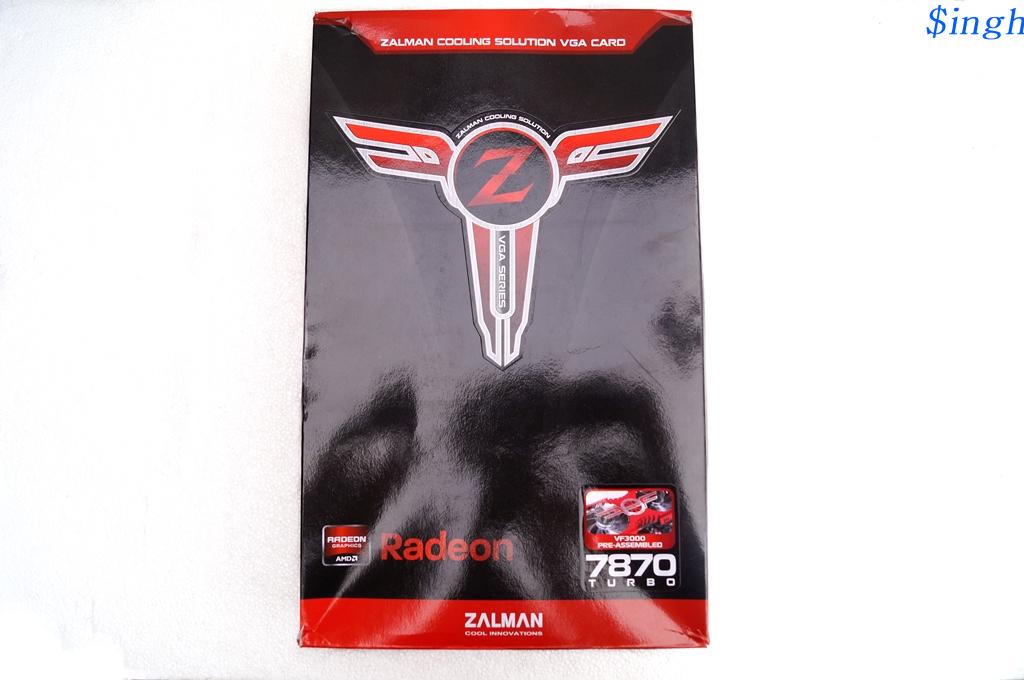
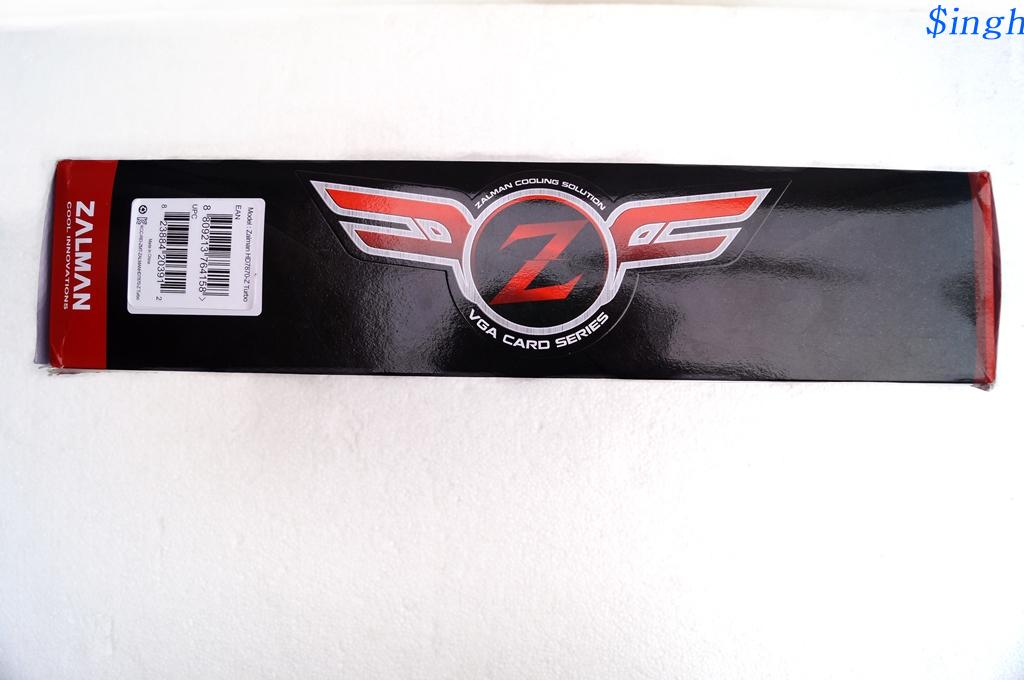
A single Crossfire bridge connection provides support for a two card CrossfireX configuration. Power is supplied to the card by way of a pair of 6-pin PCIe power connections to provide up to 225 watts to the card when the 75W PCIe slot contribution is added in. A 500 watt power supply is recommended for use with this card to prevent any power supply concerns.
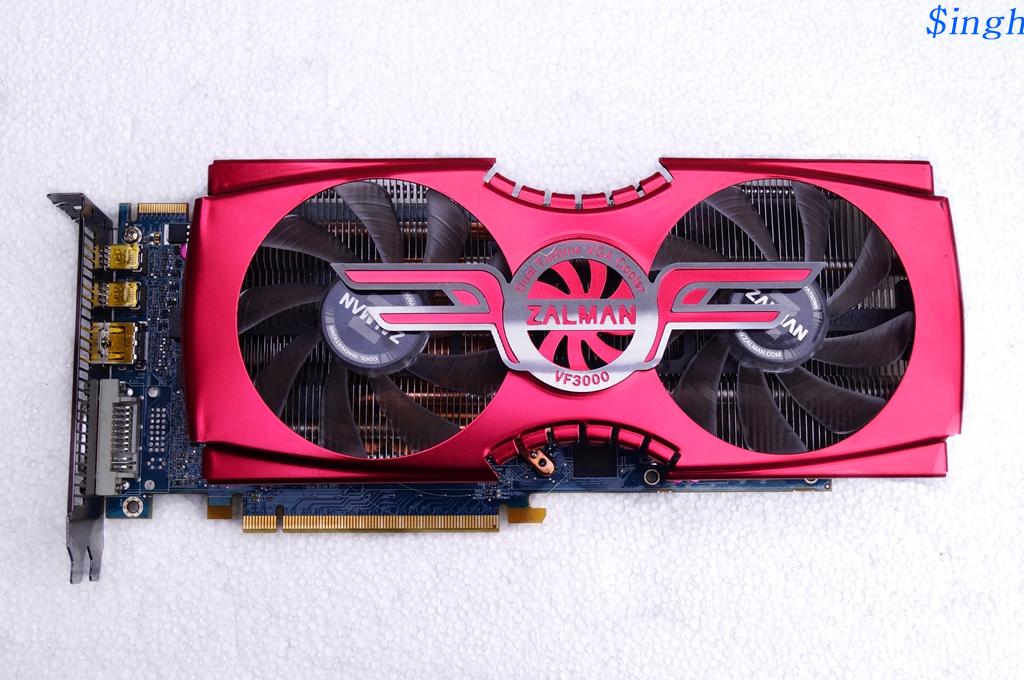
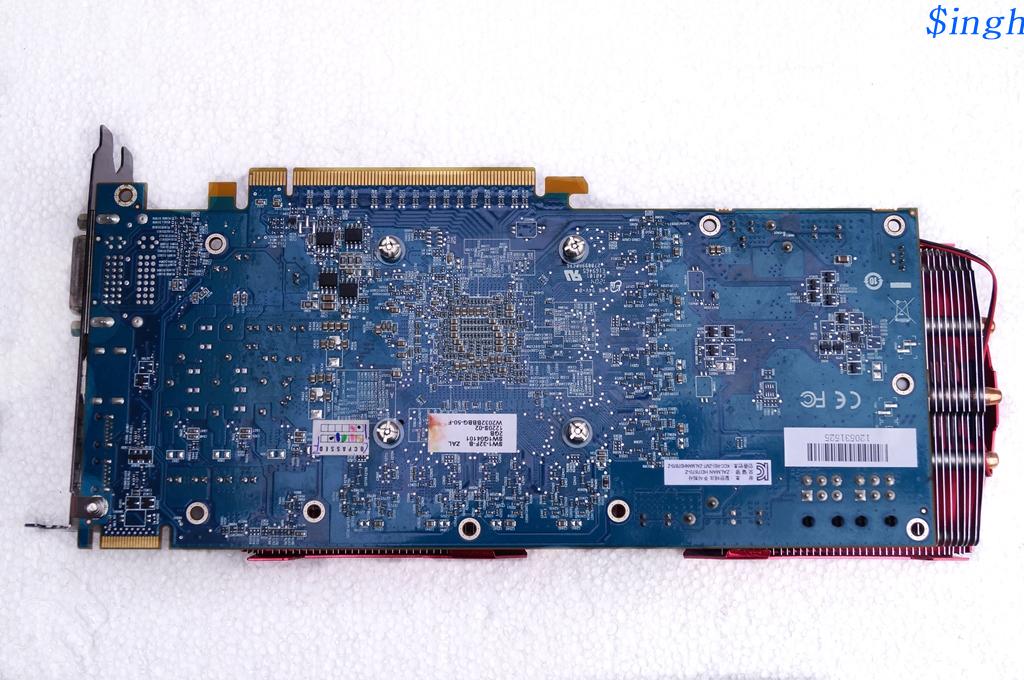
Display connectivity consists of a single DL-DVI port, a single HDMI 1.4 port that supports up to 7.1 high definition audio, and a pair of Mini DisplayPort 1.2 ports that can be used to deliver surround gaming via three monitors.
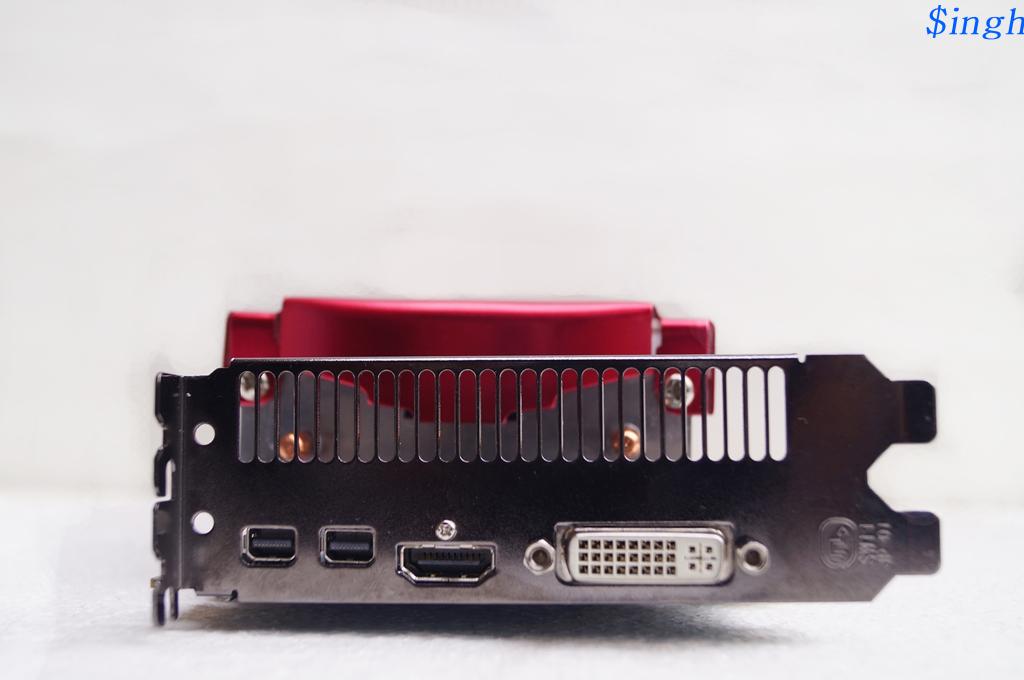
Zalman Vf3000 cooling solution is held onto the PCB by just four screws around the GPU socket. Removing the shroud heat sink assembly shows off the heat sink and how well the heat pipe direct contact surface contacts the GPU core.
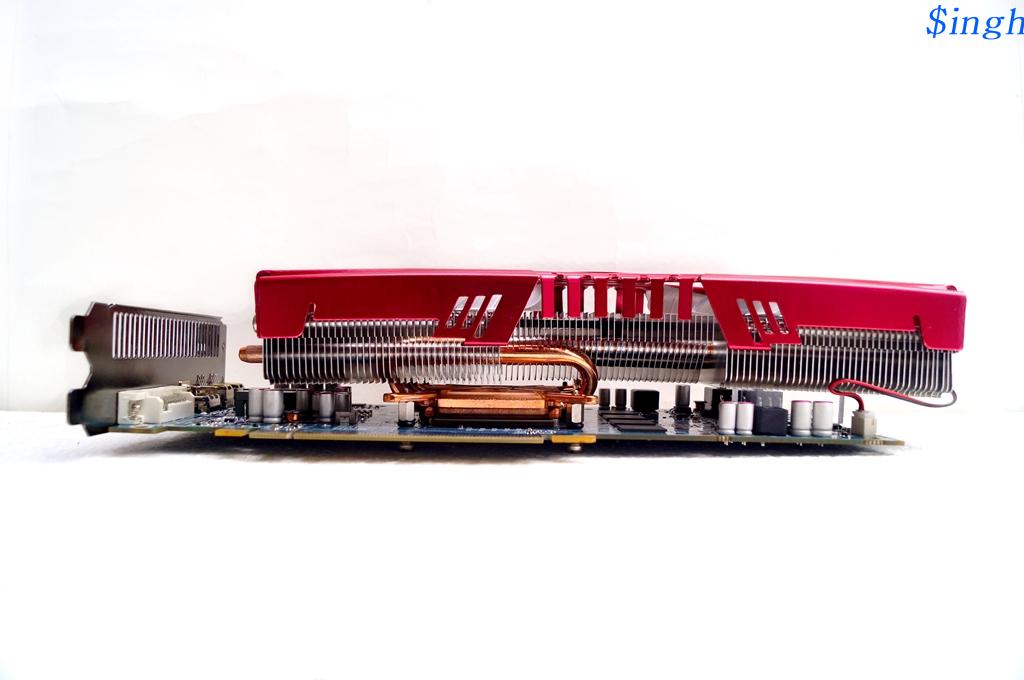
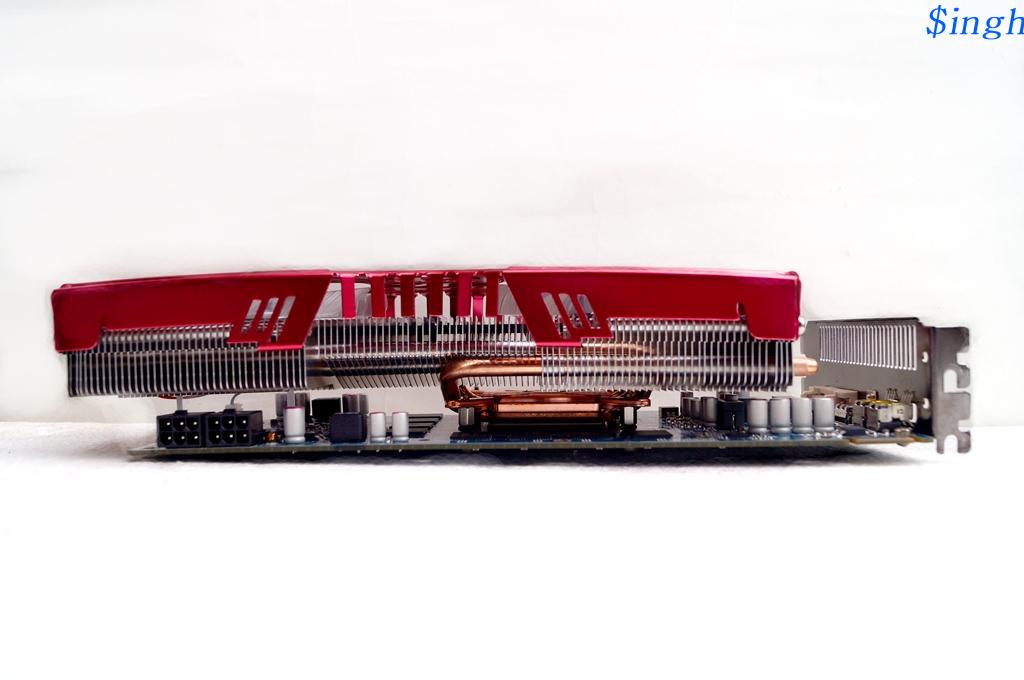
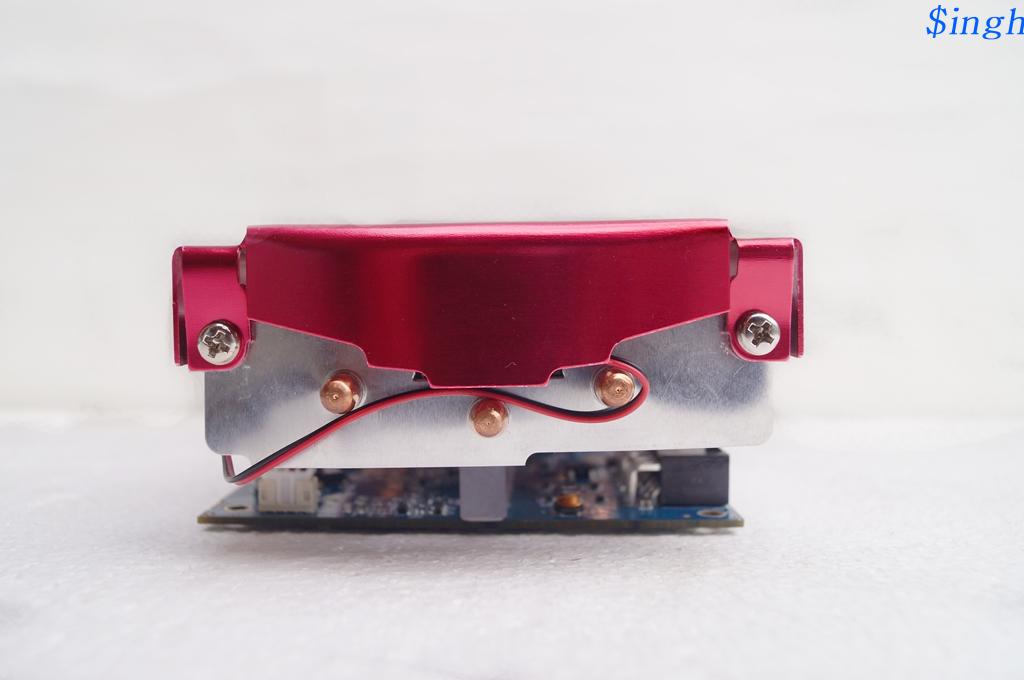
AMD's new Pitcairn graphics processor completes the AMD 28 NM GPU stack. It is produced on a 28 NM process at TSMC, with a transistor count of 2.8 billion.
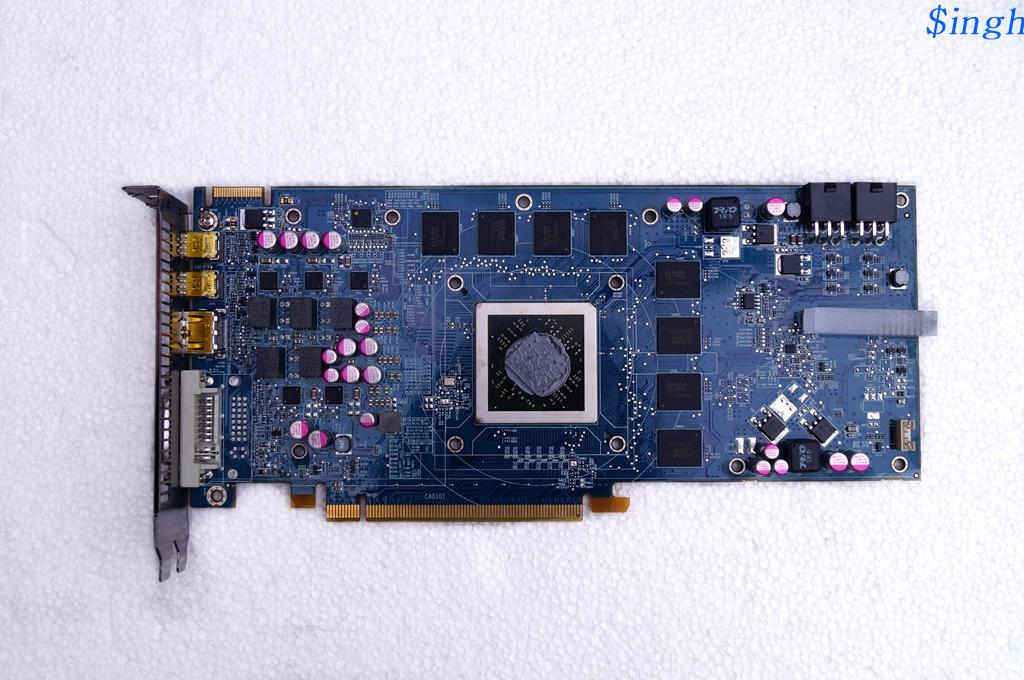
The GDDR5 memory chips are made by Elpida, and carry the model number W2032BBBG-50-F. They are specified to run at 1200 MHz (4800 MHz GDDR5 effective).
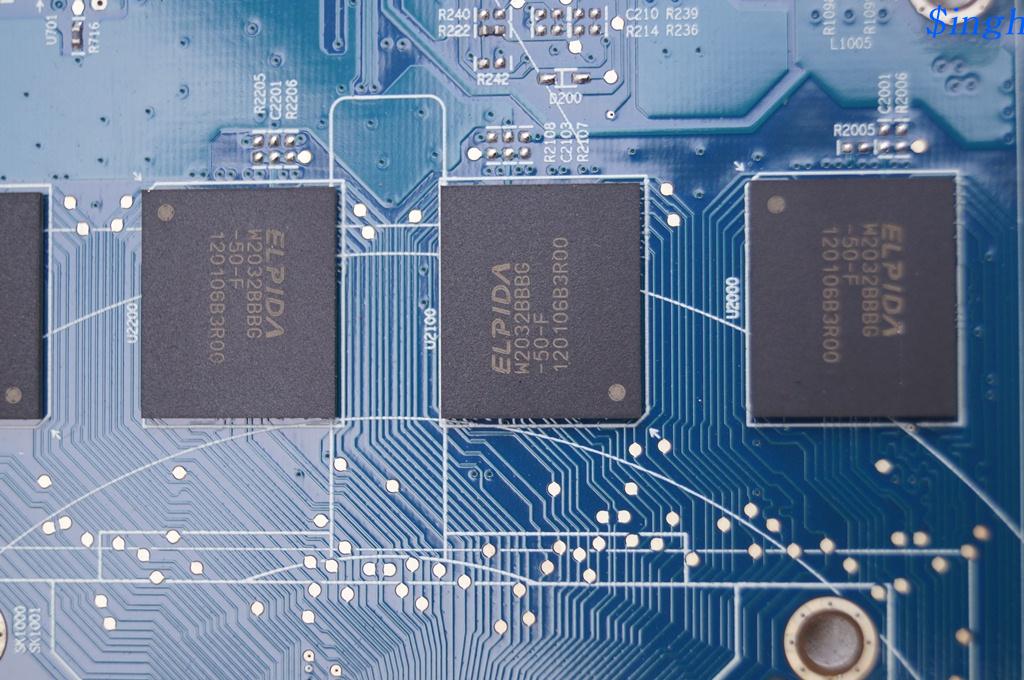
Zalman VF3000 uses five heatpipes to transport heat away from the GPU quickly to a large array of cooling fins. Two 92mm fans provide plenty of airflow to get rid of the heat.
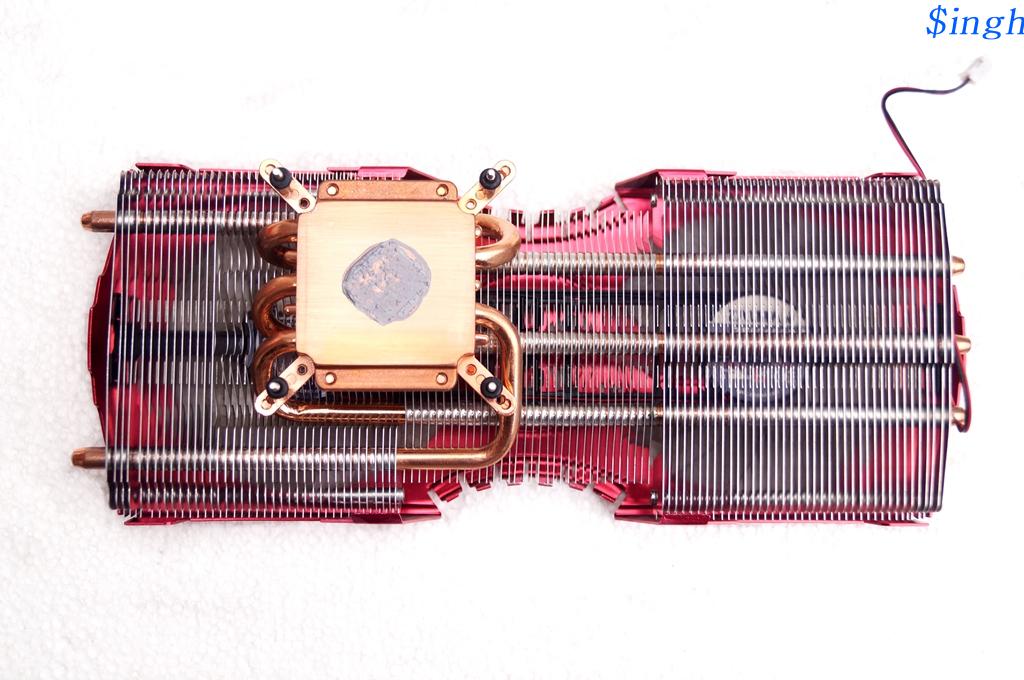
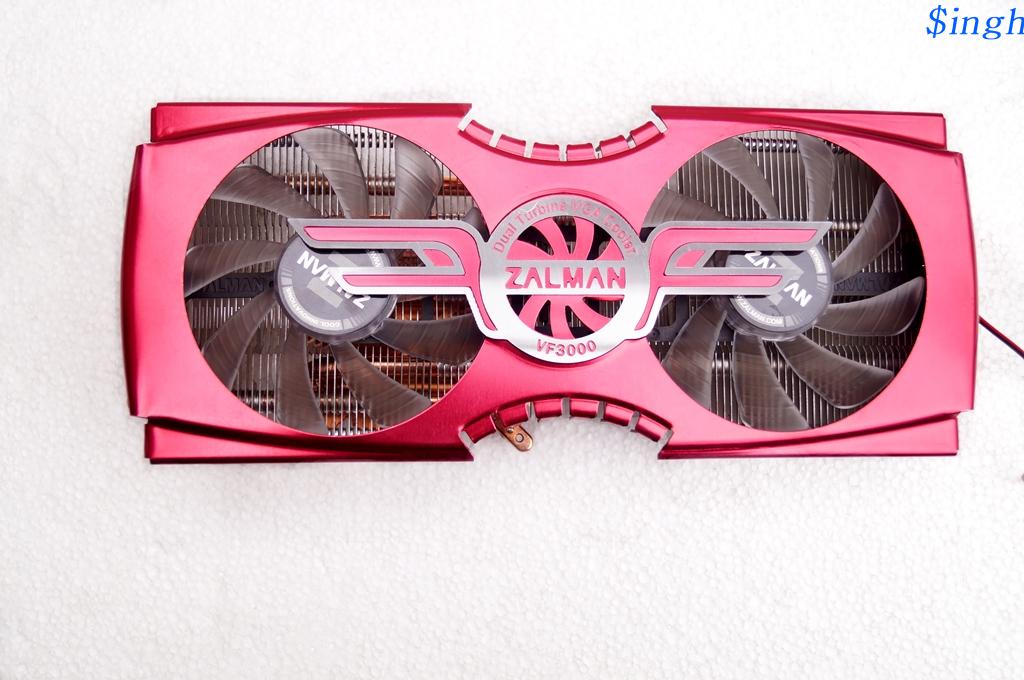
The accessory bundle that comes with the Zalman HD 7870 Turbo is slim by any definition. You get the manual, driver disk, Dvi to VGA adapter, and a crossfire bridge.
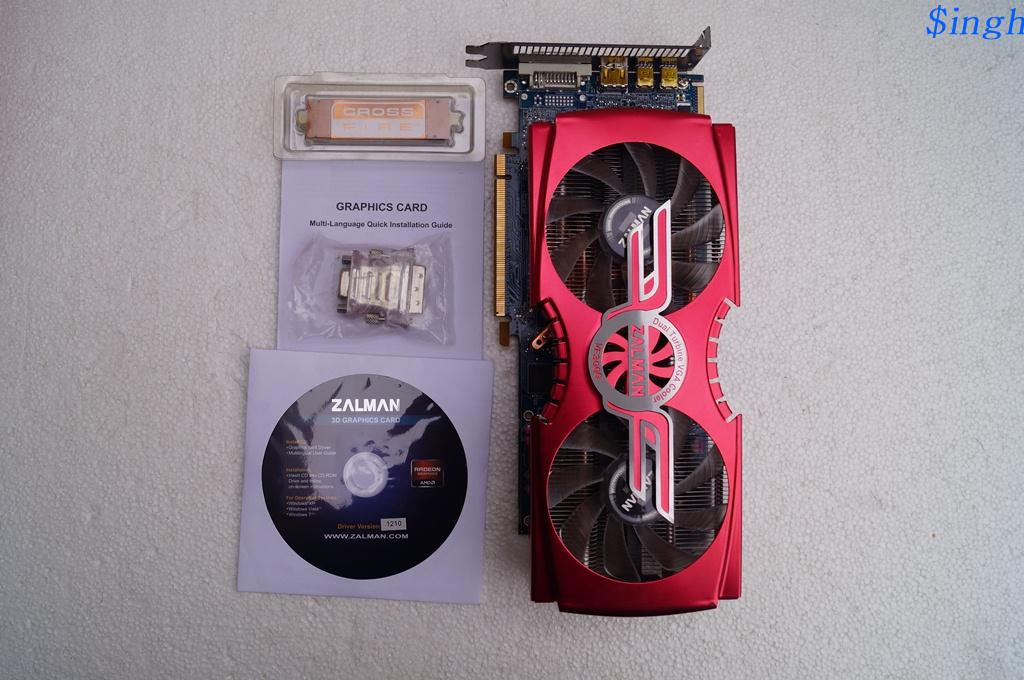
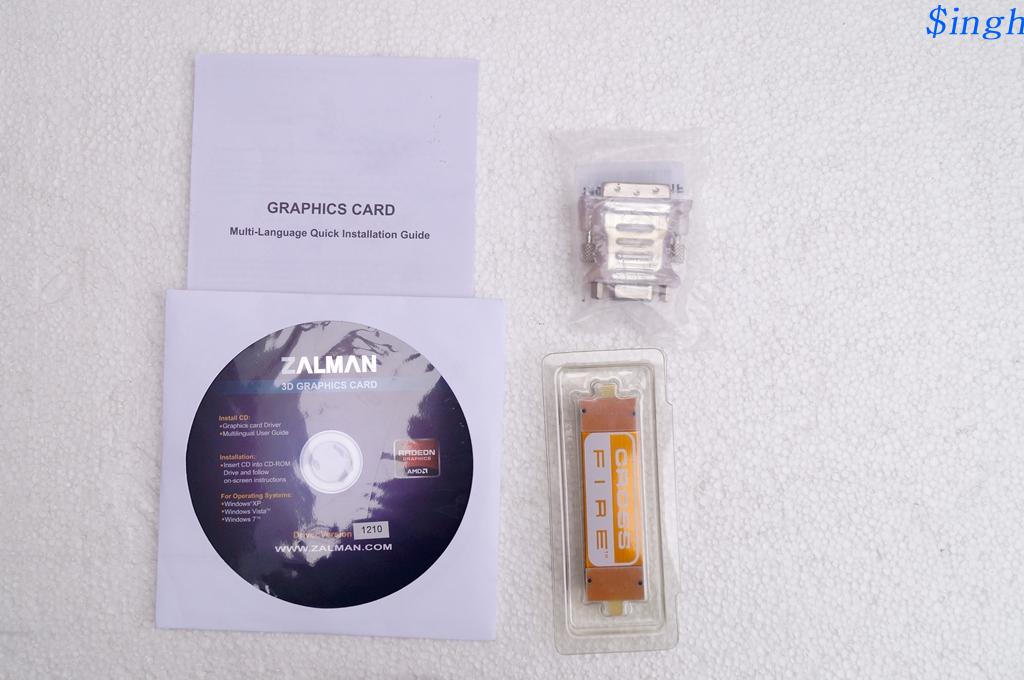
Test setup and Testing Methodology:-
All the testing is done inside the cabinet with Amd rig and processor overclocked to 4.5GHz, Configuration is mentioned below:-
Hardware:-
• AMD BULLDOZER FX 8120 @4. 5Ghz
• ASROCK 990FX EXTREME 4
• KINGSTON 8GB 1600 CL10
• CORSAIR FORCE 3 60GB SSD
• ZALMAN HD7870 TURBO
• COOLER MASTER TPC-812
• SEASONIC PLATINUM 1000W
Software:-
- Window 7 64bit
- Amd Catalyst 12.11
- ​Fraps
Benchmarks:-
Starting up the testing with some popular benchmarks 3dmark 11, 3dmark vantage and Unique Heaven.
3dmark 11
3DMark 11 is the very latest benchmark test from the house of Futuremark, which has brought out some of the most comprehensive benchmark applications for PC enthusiasts and gamers. 3DMark 11, as the name might probably suggest, makes use of the Microsoft DirectX 11 API and puts every feature on it at its disposal to use, creating astonishing realistic visuals. In the process, it evaluates DirectX 11-compliant GPUs and lets gamers know what to expect from upcoming games that make use of the API in terms of visual realism.
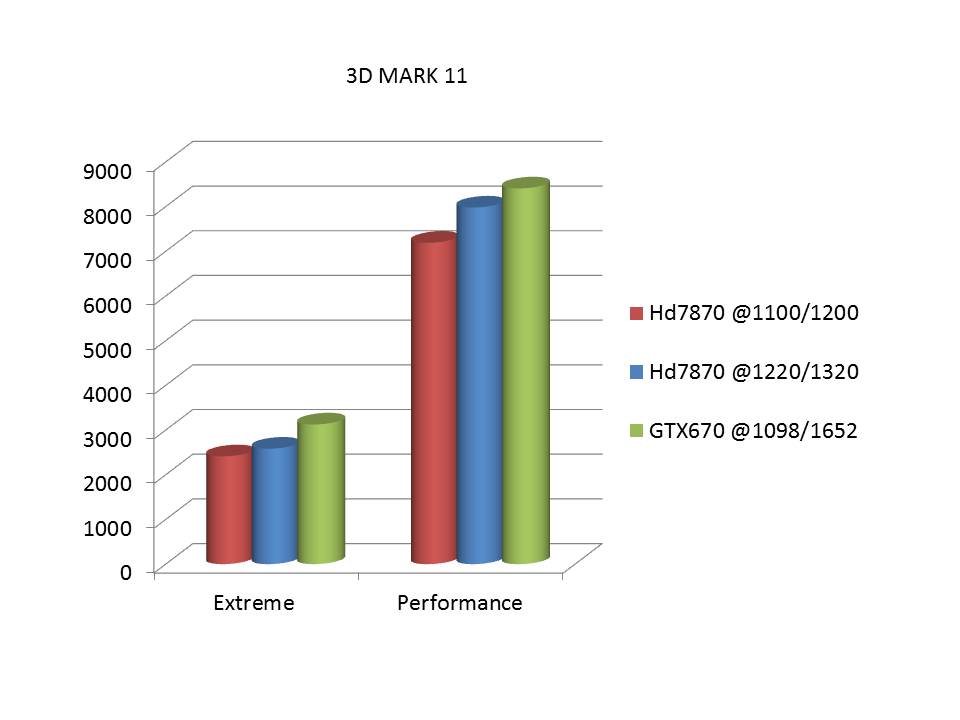
3dmark Vantage
3DMark Vantage is a full DirectX 10 compliant synthetic benchmark designed to test the DirectX 10 abilities of your video card and computing power of your PC. 3DMark Vantage focuses on the two areas most critical to gaming performance: the CPU and the GPU. With the emergence of multi-package and multi-core configurations on both the CPU and GPU side, the performance scale of these areas has widened, and the visual and game-play effects made possible by these configurations are accordingly wide-ranging.
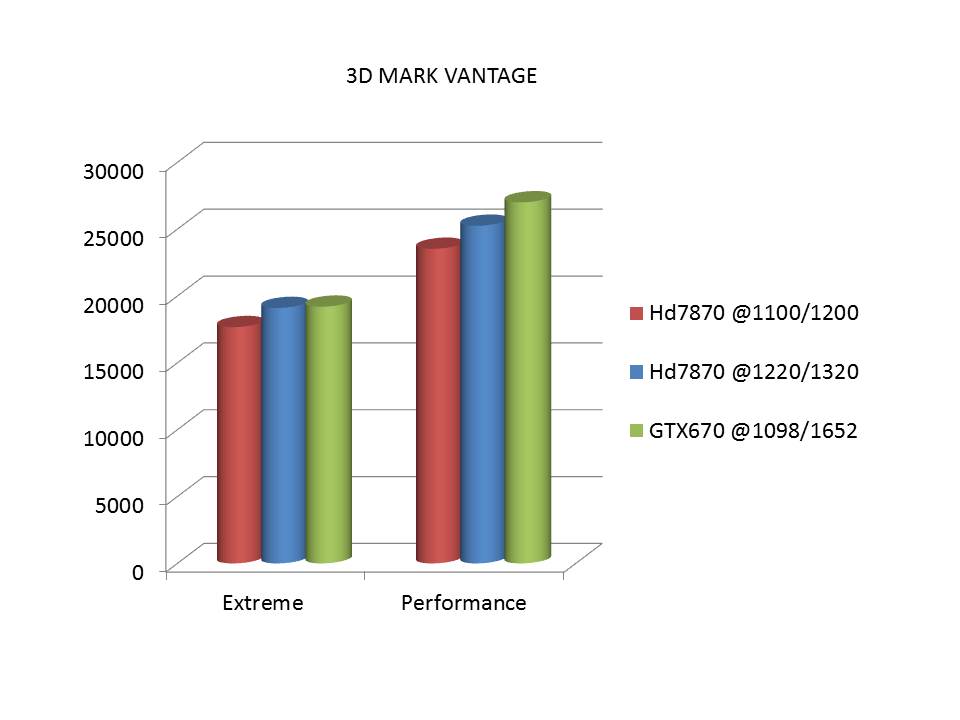
Unique Heaven
Unique Heaven was one of the first demos that supported DirectX 11. Heaven is a technology demonstration of the Unigine engine which supports DirectX 9 through 11 and OpenGL. Version 2.0 adds more scenes and, optionally, more complex dissolution features. Although there is some controversy surrounding the benchmark and as to whether it is an accurate representation of what to expect from future games in regard to DirectX 11, we still decided to use this test to get an insight into the potential of future gaming.
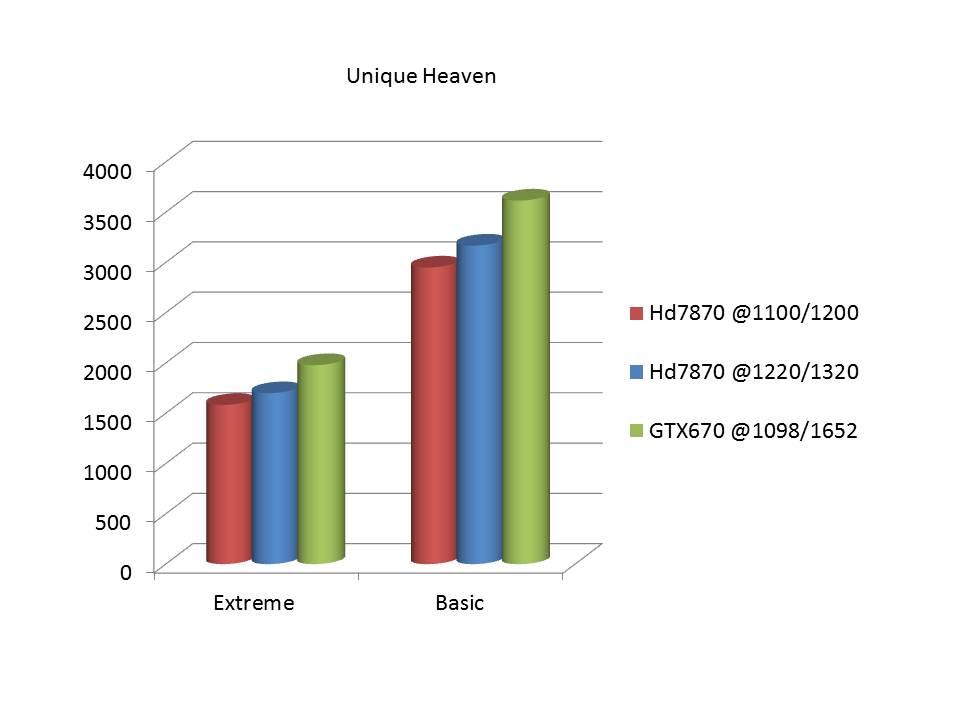
Benchmarks Continues:-
Continuing the benchmarks with Some Games, and software used to check frames are Fraps and internal benchmarks of the Games .
Hitman Absolution
The game takes place in the United States, and features an online option. In addition, the game features "instinct mode" which allows 47 to predict enemy patrol routes, much like the "sonar vision" that was featured in Tom Clancy's Splinter Cell: Conviction, "eagle vision" in Assassin's Creed, "tracker mode" in Crysis 2, and "Detective mode" in Batman: Arkham Asylum. The game has also been improved in all aspects to provide a more console-like third person shooter experience along with the classic stealth elements the series is known for. Game tested at Ultra High settings at different resolutions.
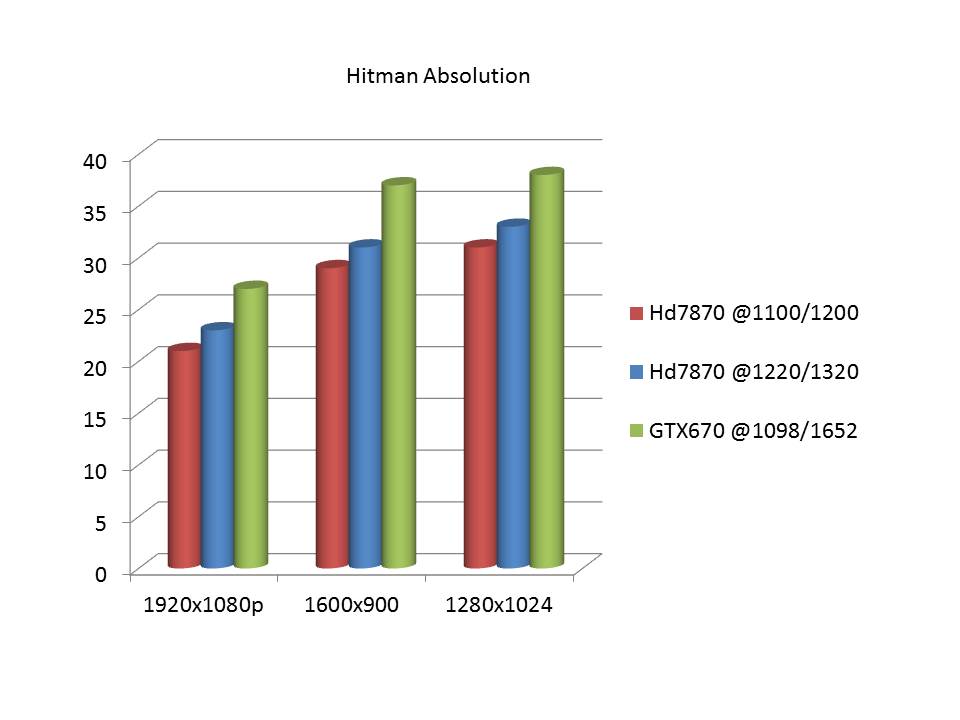
Farcry 3
Far Cry 3 is an open world first-person shooter, which also features role-playing game elements including experience points, skill trees, and a crafting system. The player has the ability to take cover behind objects to break enemies' lines of sight and also to peek around and over cover and blindfire[clarification needed]. The player also has the ability to perform silent "takedowns" by performing melee attacks from above, below, or close behind. Game tested at Ultra High settings at different resolutions.
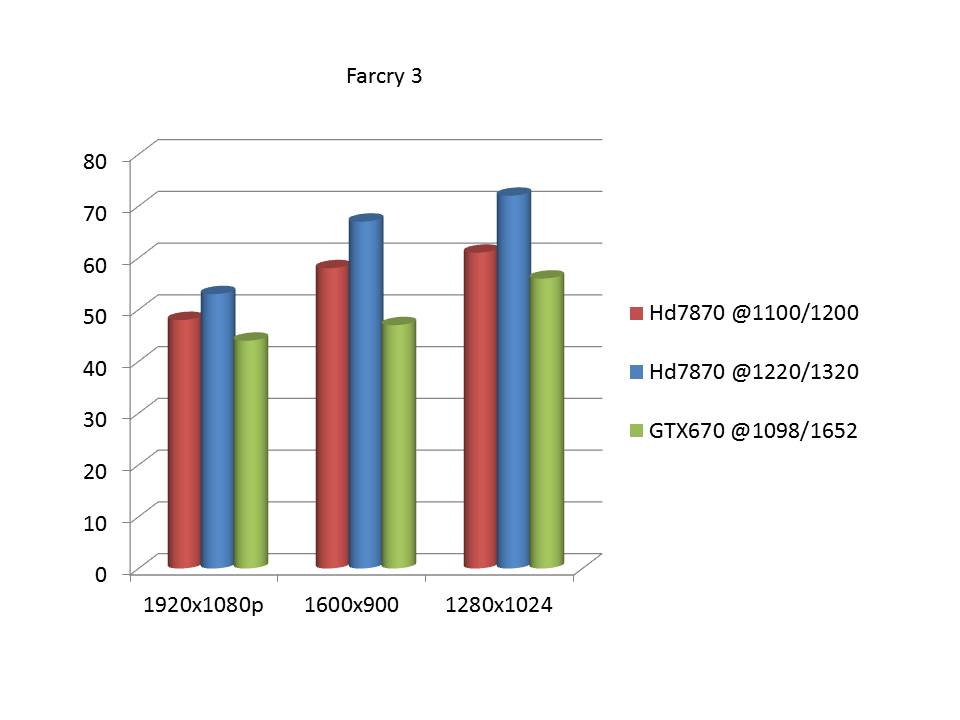
Battlefield 3
Arguably the most anticipated online shooter title among real gamers - PC gamers, Battlefield 3 is the latest addition to some of the most engaging online multi-player shooter franchises. It combines infantry combat with mechanized warfare including transport vehicles, armored personnel carriers, main battle tanks, attack helicopters, combat aircraft, pretty much everything that goes into today's battlefields. The infantry combat is coupled with role-playing elements, which makes the experience all the more engaging. It also has a single-player campaign which added a few gigabytes to its installer.
Behind all this is a spanking new game engine by EA-DICE, Frostbite 2. It makes use of every possible feature DirectX 11 has to offer, including hardware tessellation, and new lighting effects, to deliver some of the most captivating visuals gamers ever had access to. Not playing this game on PC is grave injustice to what's in store. Faster PCs are rewarded with better visuals. Game tested at maximum possible settings Achieved.
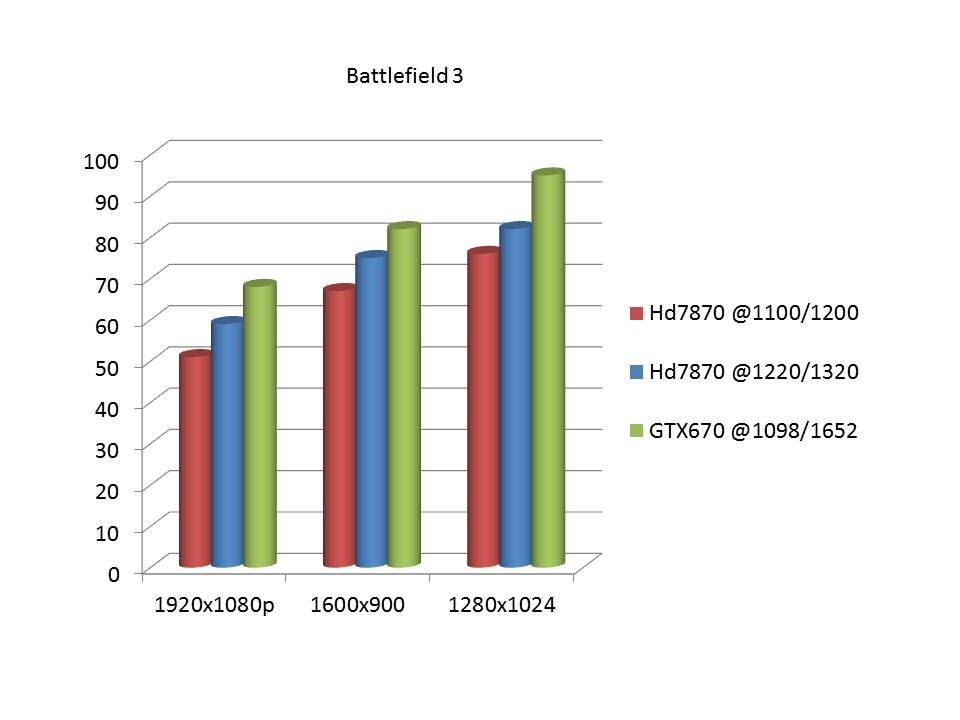
Max Payne 3
Max is back! The long anticipated third release in the Max Payne series is the first game developed by Rockstar, which took over the title from Remedy Entertainment. In this first-person shooter, using an over-the-shoulder camera view, you battle the bad guys using game-changing features like Bullet Time or Last Stand. The maps have scenic locations taking the player to places like New York, Sao Paulo, and Panama.
The Max Payne 3 game engine uses DirectX 11 with tessellation and very detailed textures. Game tested at maximum possible settings Achieved.
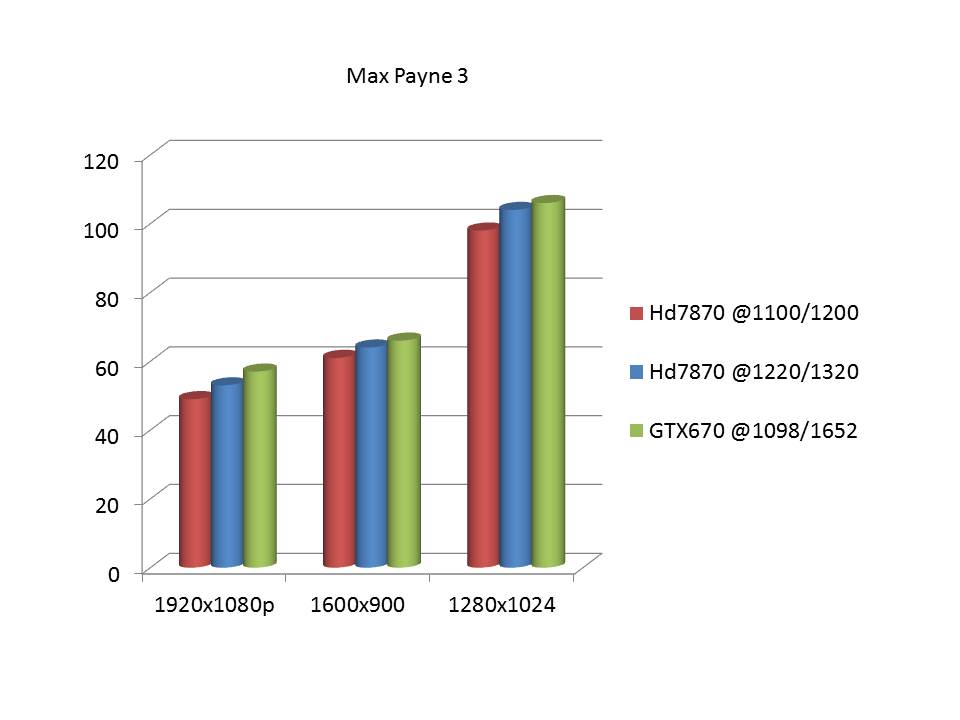
Sleeping Dogs
Sleeping Dogs is a 2012 open world action-adventure video game. The core gameplay of Sleeping Dogs consists of giving the player an open world environment in which to move around freely. Sleeping Dogs are played as an over-the-shoulder, third-person perspective action-adventure game with role-playing elements. The player controls Wei Shen, a Chinese-American police officer, as he goes undercover to infiltrate the Sun On Yee Triad organization.
Sleeping dogs game engine uses DirectX 11 with tessellation and very detailed textures. We tested the game with details set to the maximum possible.
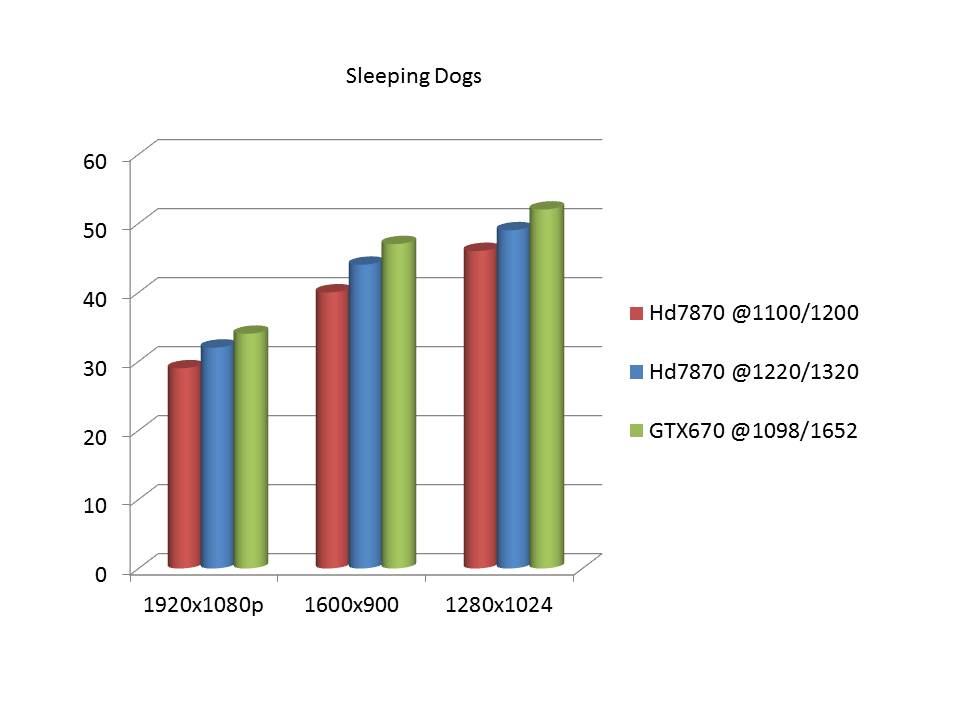
Batman Arkham City
Batman: Arkham City, a sequel to Batman Arkham Asylum, by Rocksteady Games and WB. It was released on the PC platform in November. Batman is imprisoned in Arkham City, an infamous district of the DC Universe that contains the scum of Gotham, most of whom Batman helped put in there. In order to get out, he must go through scores of baddies and encounters many of the iconic supervillains along the way - he's not entirely alone.
The Batman Arkham City uses the same Unreal Engine by Epic as Batman Arkham Asylum and takes advantage of DirectX 11. Benching has done with DX11 Selected and all ultra settings.
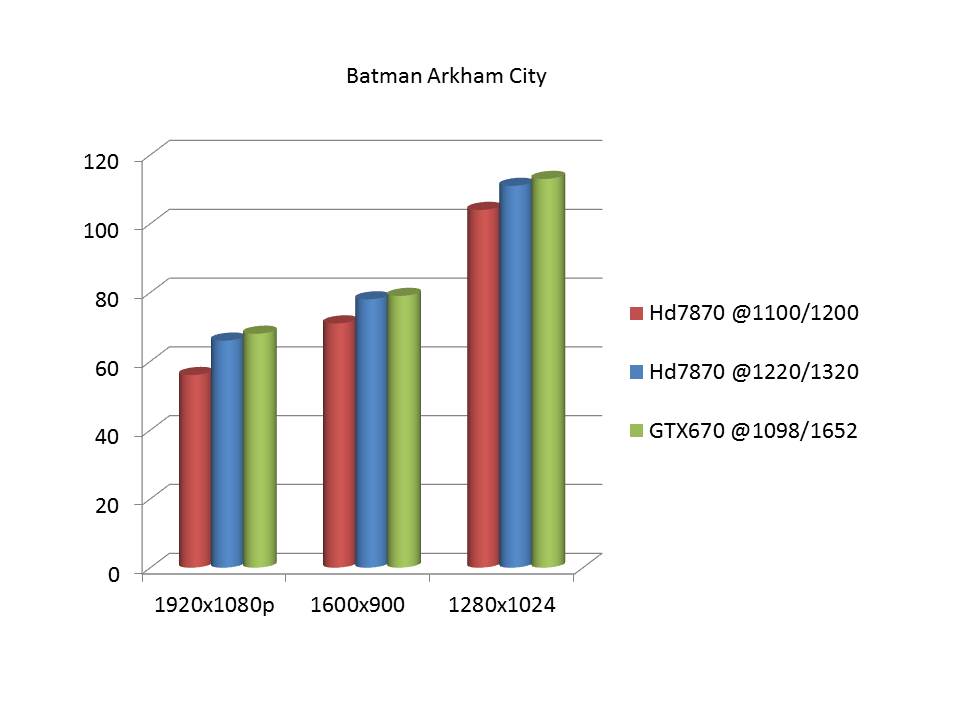
Street Fighter X Tekken
Street Fighter X Tekken is a crossover fighting game developed by Capcom and released in March 2012 for the PlayStation 3 and Xbox 360, in May for the PC. The game features characters from both the Street Fighter franchise and Namco's Tekken series. In the game, players select two characters and face other duos in tag team fighting matches, in which the objective is to knock out both members of the opposing team. Maximum Settings Playable used for checking frame rate .
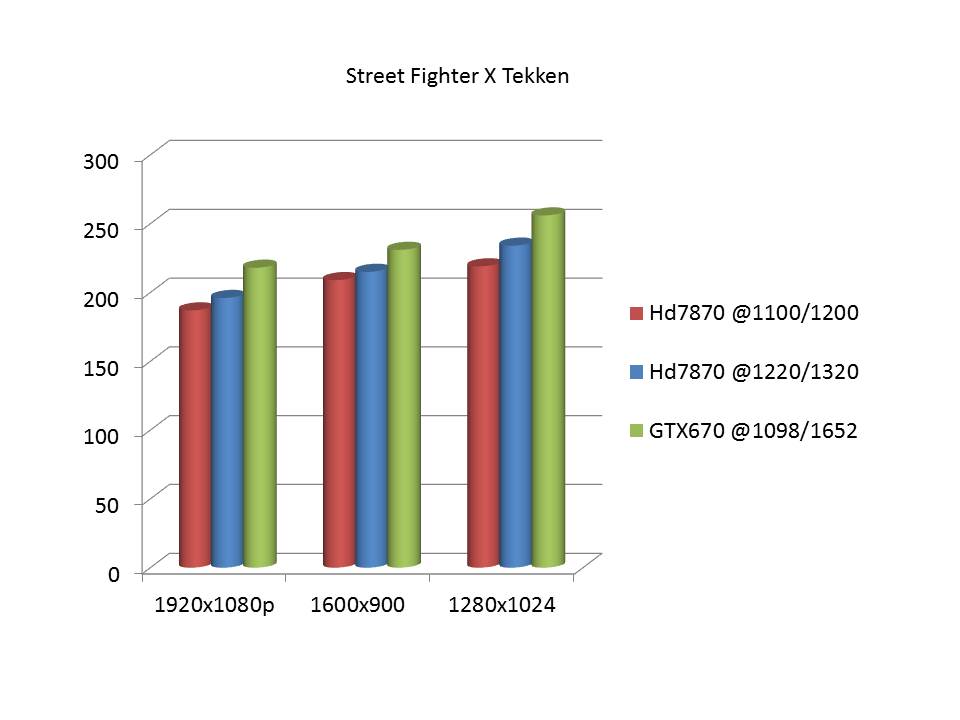
Overclocking & Temperatures
Zalman HD 7870 Turbo showed some good Overclocking prowess with a significant boost in core clock speed and a smaller boost in the overall memory clock speeds. By using MSI's Afterburner utility I was able to boost the clock speed on the core by 125MHz over the baseline clock speed of 1100MHz considering 100mhz factory overclocked.
The memory Overclocking was a bit subdued with a 130MHz bump over the factory 1200MHz. In each and every benchmark the clock speed increases offered up significant FPS or scoring improvements that add performance for your price.
To ensure stability I did increase the fan speed to 100% to keep the GPU as cool as it could be under load. Temperature testing will be accomplished by loading the video card to 100% using MSI’s Kombuster, with MSI's Afterburner Overclocking utility for temperature monitoring. With two 92mm fans and Zalman VF3000 heat sink the Maximum temperature was around 66c @1220/1320Mhz of maximum achieved clock.
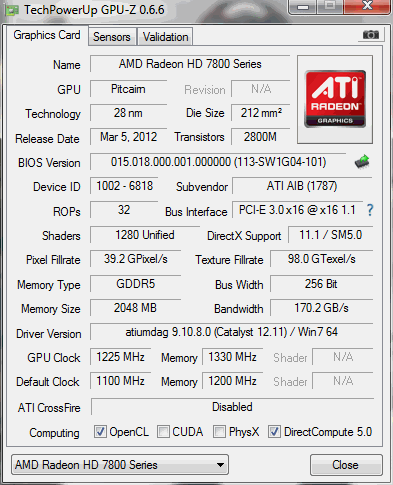
Pros:-
Quiet
Low temperatures
Native, full-size HDMI output
Cons:-
Low Overclock
No Pwm fans Control
Specially Thanks to Zalman For providing this review Sample.


 Regarding price its is available for $260 Usd ..
Regarding price its is available for $260 Usd ..